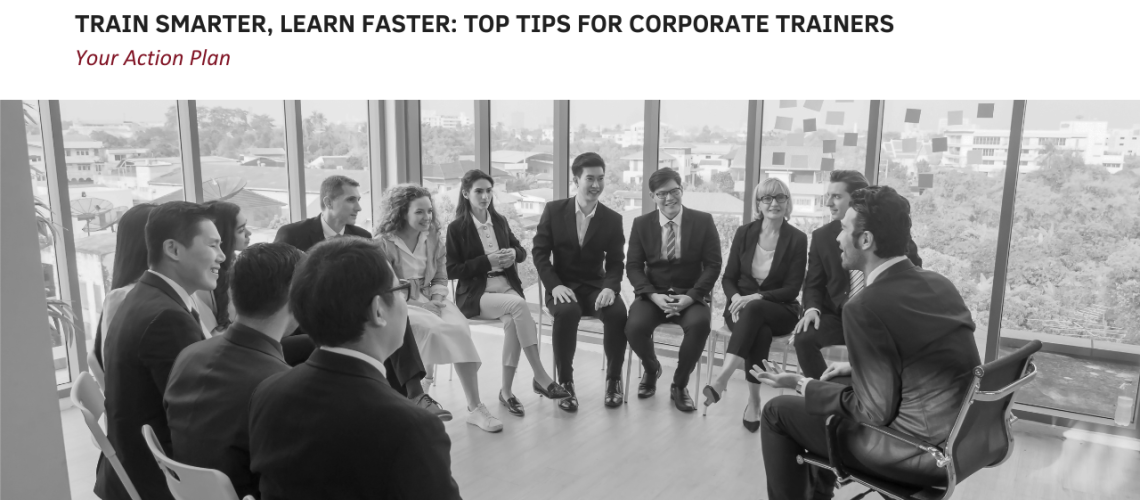Are you familiar with the feeling of being in a training session, surrounded by eager faces, yet somehow feeling disconnected from the material being presented? This common experience, known as the Trainer-Trainee Gap, is a significant obstacle in the path of effective learning and development.
training initiatives play a pivotal role in shaping individual and organizational success, bridging this gap becomes essential. It’s not just about telling information; it’s about raising meaningful connections, understanding diverse learning styles, and overcoming challenges that delay progress.
Understanding the Diverse Needs of Trainees
In any training situation, participants bring with them a rich tapestry of backgrounds, learning preferences, and goals. Recognizing and accommodating these differences is vital for ensuring that training resonates with each individual. Here’s how to navigate the diverse needs of trainees:
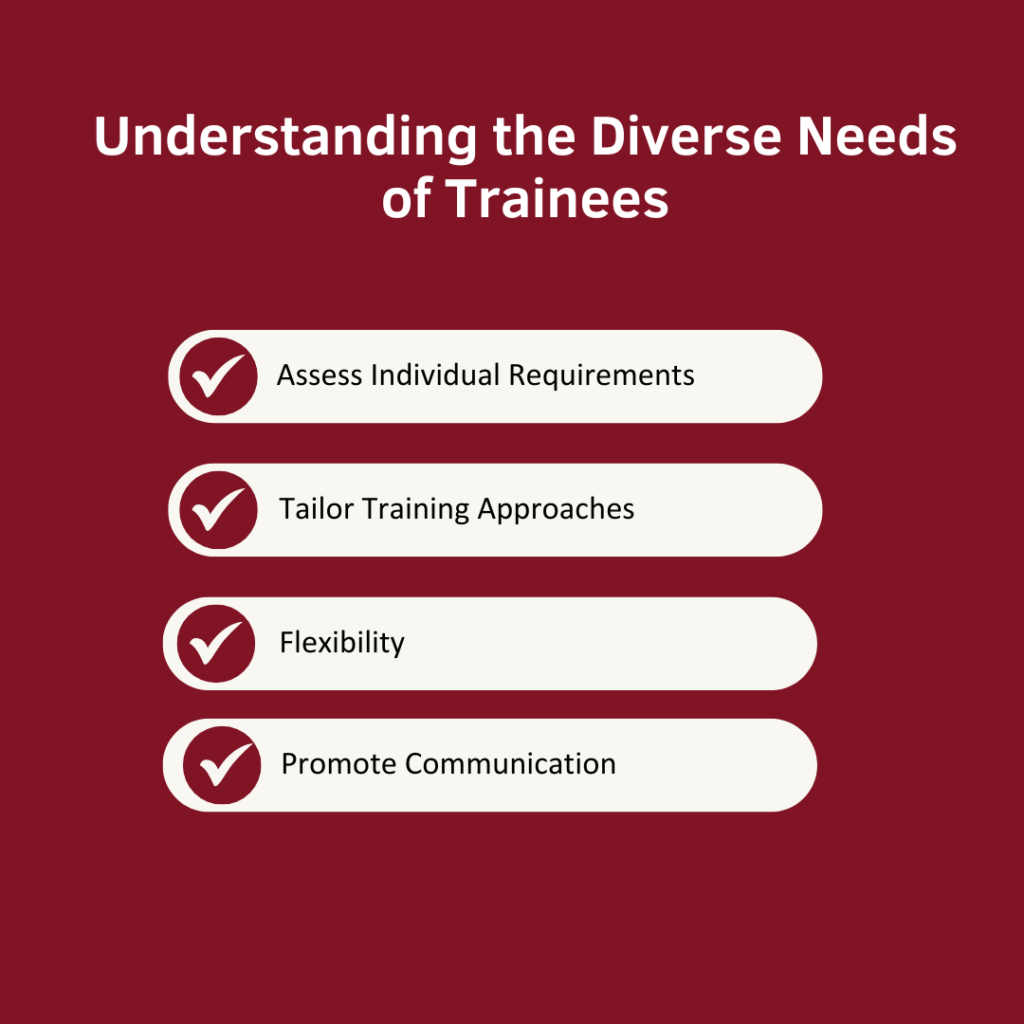
- Assess Individual Requirements: Each trainee has unique learning styles and preferences. For instance, while some may excel with visual aids, others may prefer hands-on activities. By understanding these distinctions, trainers can tailor their approach accordingly.
- Tailor Training Approaches: Once trainers identify individual requirements, they can adapt their methods to suit various learning preferences. This could mean adjusting the pace of instruction, offering supplemental resources, or providing personalized support when needed.
- Flexibility: Flexibility is essential in accommodating diverse needs within a group. Being open-minded and adaptable allows trainers to create an inclusive environment where every trainee feels valued and supported, regardless of their learning style.
- Promote Communication: Encouraging open dialogue and feedback is crucial for understanding what resonates with each trainee. Effective communication provides insights into individual needs, leading to more impactful training sessions tailored to meet those needs.
By recognizing and addressing the diverse needs of trainees, trainers can foster an inclusive and engaging learning environment that effectively caters to everyone’s requirements.
The Importance of Communication in Bridging the Gap
Communication serves as the cornerstone for connecting trainers and trainees, fostering understanding, trust, and collaboration in the learning process. Here’s why effective communication is essential:
- Unlocking Understanding: Picture a scenario where a trainee is struggling to grasp a complex concept during a training session. Through active listening and clear articulation of expectations, the trainer guides the trainee step by step, using relatable examples and real-world analogies. As a result, the trainee gains a deeper understanding of the topic, bridging the gap in comprehension and ensuring mutual understanding between both parties.
- Building Trust: In a training environment where trainers encourage open dialogue and feedback from their trainees, a trusting relationship between them and the trainers is fostered. This transparent environment fosters a sense of trust, where trainees are more engaged and receptive during training sessions, knowing that their opinions are valued.
- Setting Clear Expectations: In a workplace training setting, a project deadline is pending, and the team needs to deliver results. Clear communication from the trainer about project expectations, roles, and responsibilities ensures that everyone is on the same page. When expectations are clearly defined, both trainers and trainees can work towards common outcomes without confusion or misunderstandings, leading to successful project completion.
- Enhancing Engagement and Retention: In a training session, the trainer incorporates interactive exercises and real-life case studies to reinforce key concepts. Trainees actively participate in discussions, share insights, and receive constructive feedback. This positive interaction, facilitated by effective communication, enhances engagement and improves retention of information. Trainees are more likely to retain and apply what they’ve learned when communication channels are open and when they feel valued as active participants in the learning process.
In summary, effective communication not only bridges the gap between trainers and trainees but also strengthens relationships built on mutual respect and understanding. Through clear communication, trainers can create a supportive learning environment that fosters engagement, collaboration, and ultimately, successful training outcomes.
Strategies for Effective Training
To ensure training is effective and impactful, employing well-planned strategies is essential. Here are some approaches to consider:
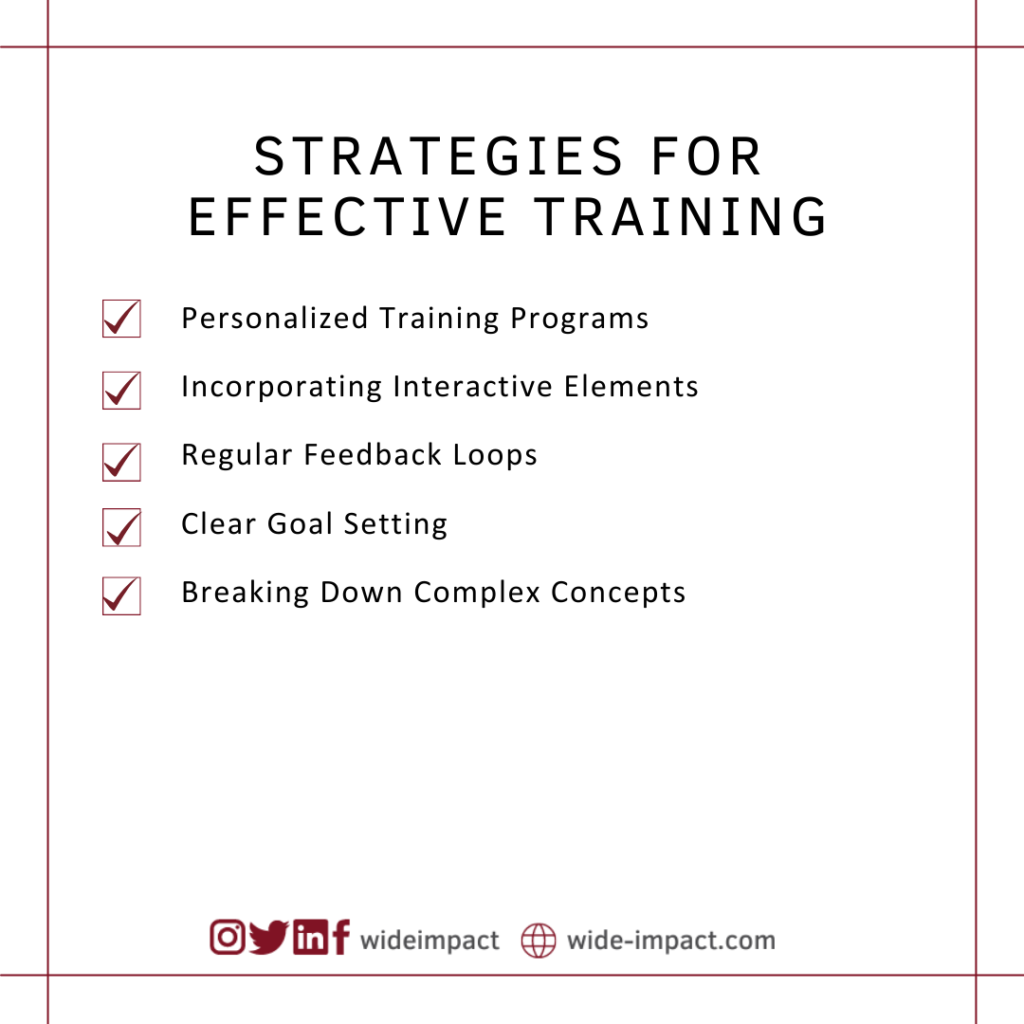
- Personalized Training Programs: Just like a tailor crafts a suit to fit an individual perfectly, trainers can customize the training program to suit the unique needs and learning styles of each trainee. For instance, if a trainee learns best through visual aids, incorporating infographics or video tutorials can enhance comprehension and retention.
- Incorporating Interactive Elements: Imagine a cooking class where participants don’t just watch demonstrations but actively participate in preparing dishes. Similarly, integrating hands-on activities, group discussions, and real-life applications into training sessions can transform passive learners into active participants, making the learning experience more engaging and memorable.
- Regular Feedback Loops: Picture a sports coach regularly assessing the performance of athletes during practice sessions. In the same way, establishing regular feedback loops allows trainers to gauge trainee progress and understanding. By encouraging trainees to provide input on what’s working well and areas for improvement, trainers can continuously refine the training process to better meet the needs of participants.
- Clear Goal Setting: Think of a roadmap guiding travelers to their destination. Similarly, defining clear goals and objectives at the beginning of the training program provides both trainers and trainees with a roadmap for success. This clarity helps maintain focus and direction throughout the training, ensuring that everyone understands what needs to be accomplished and why it’s important.
- Breaking Down Complex Concepts: Consider a puzzle being solved piece by piece, making it easier to understand the bigger picture. Similarly, breaking down complex concepts into smaller, digestible chunks facilitates understanding for trainees. By presenting information in a structured and accessible manner, trainers can promote effective learning and empower participants to grasp even the most challenging topics.
By implementing these strategies thoughtfully, trainers can enhance the effectiveness and engagement of their training programs, ultimately leading to better outcomes for all involved.
Creating a Supportive Learning Environment
Establishing a supportive learning environment is crucial for effective training. It involves fostering an atmosphere where trainees feel valued, encouraged, and motivated to learn. Here are key strategies to achieve this:
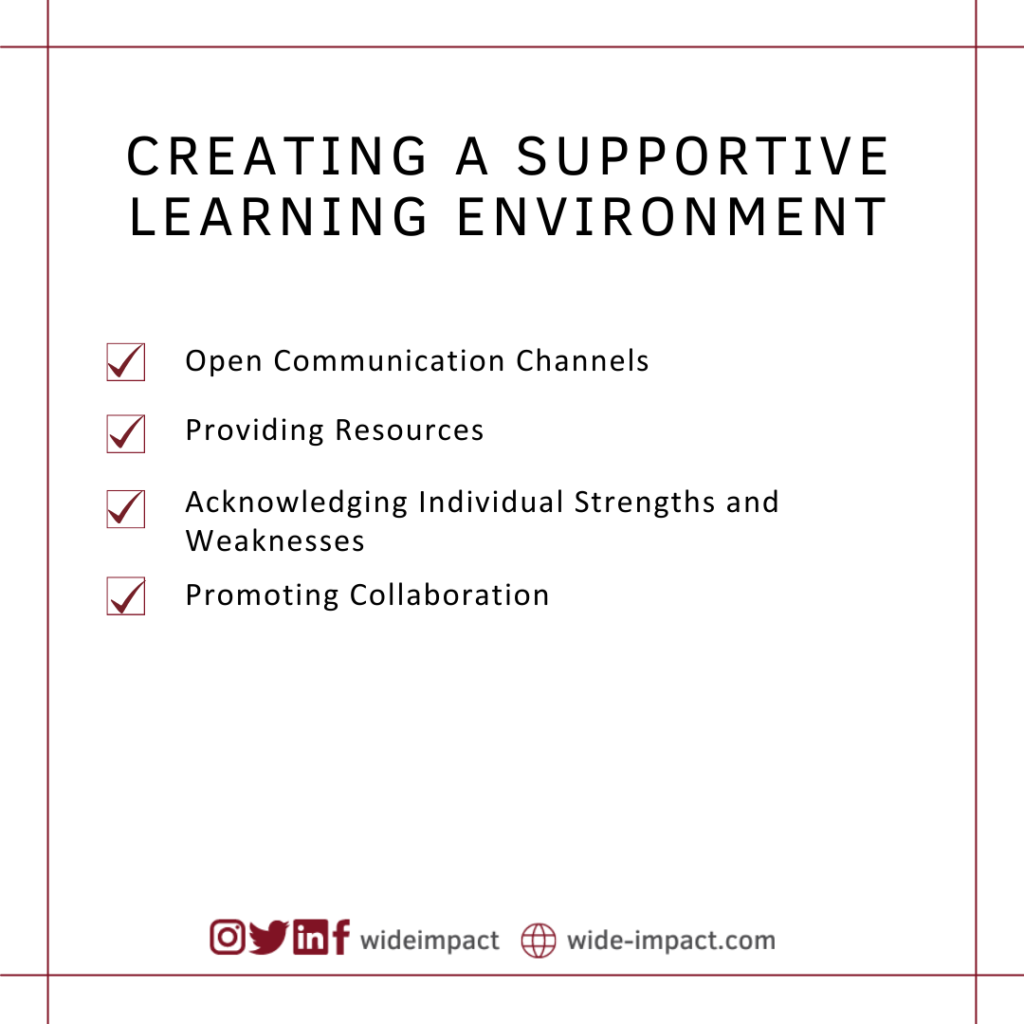
- Open Communication Channels: Encourage feedback and dialogue between trainers and trainees to build trust and mutual respect.
- Providing Resources: Offer access to materials, tools, and technology to enhance the learning experience, enabling trainees to explore topics further and apply their knowledge practically.
- Acknowledging Individual Strengths and Weaknesses: Tailor training methods to suit diverse learning styles, ensuring personalized support for each trainee.
- Promoting Collaboration: Foster a sense of community and shared learning experiences among trainees through group activities, encouraging teamwork, problem-solving skills, and peer-to-peer support.
Creating a supportive learning environment lays the foundation for successful training outcomes by nurturing growth, development, and continuous improvement for all participants.
Addressing Challenges and Obstacles in the Training Process
Training is vital for professional development, yet it often encounters obstacles that hinder learning effectiveness. Let’s explore common challenges and strategies to enhance the training experience:
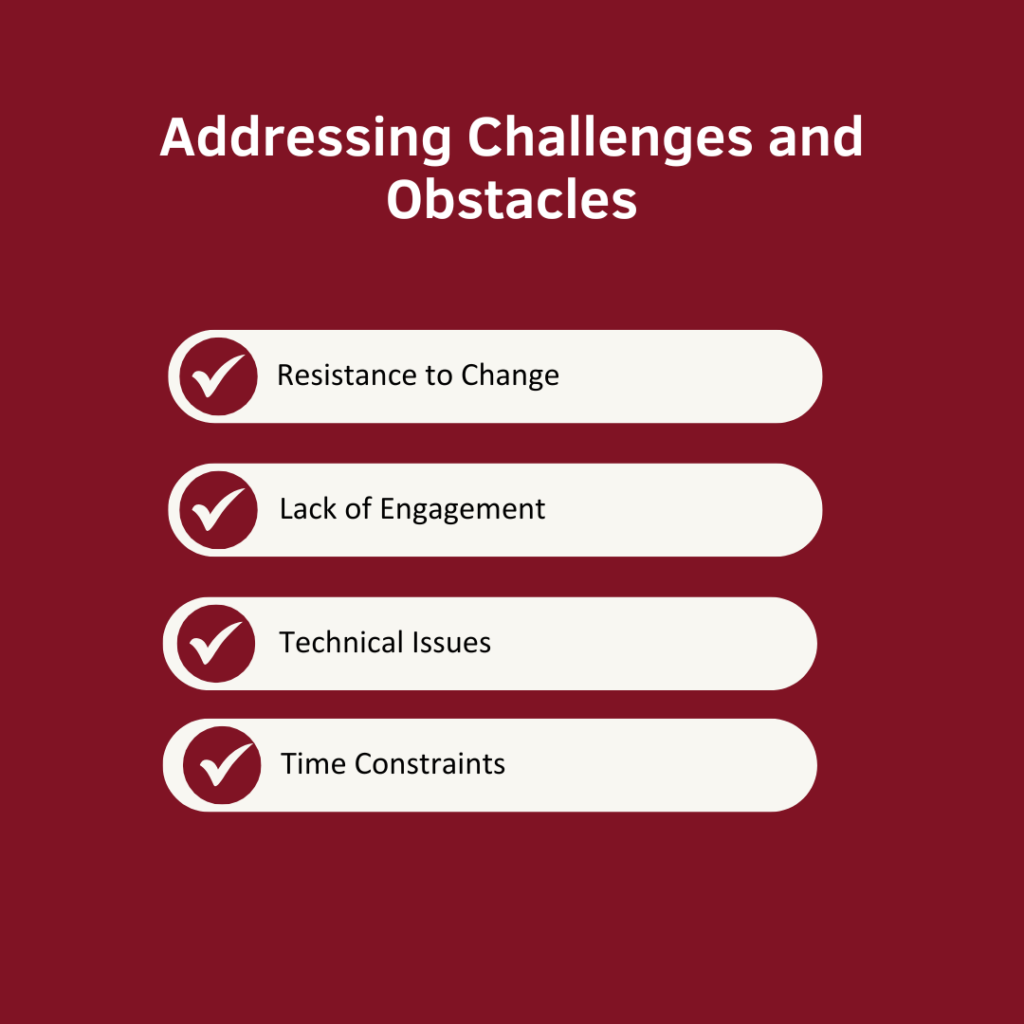
- Resistance to Change: Trainees may exhibit resistance to adopting new methods or technologies. Clear communication about the benefits of training can help alleviate this resistance and promote acceptance of change.
- Lack of Engagement: Trainees may disengage from training if they perceive the content as irrelevant. To counteract this, trainers can make the training sessions more interactive and relatable to real-life scenarios, thus increasing engagement and participation.
- Technical Issues: Technical difficulties such as equipment malfunctions or software glitches can disrupt training sessions. It’s essential for trainers to have contingency plans in place and ensure that technical support is readily available to minimize interruptions and maintain the smooth flow of training.
- Time Constraints: Conflicting schedules among trainees pose a significant challenge in ensuring consistent participation. To address this, trainers can offer flexible training options such as online modules or recorded sessions, allowing trainees to access training materials at their convenience and accommodate their varying schedules.
By proactively identifying and addressing these challenges, trainers can create a more seamless and effective learning experience for their trainees.
Bridging the Trainer-Trainee Gap is not just a task of conveying information, but a way of fostering connections and unlocking untapped potential.
This bridging process holds immense value for both trainers and trainees alike. By fostering meaningful connections, understanding diverse learning styles, and addressing challenges head-on, we unlock the full potential of every individual involved in the training process.
The creation of a supportive learning environment lays the foundation for improved performance, engagement, and success, leading to positive outcomes for both personal and professional growth. As we continue to prioritize collaboration, communication, and adaptability, we pave the way for continuous improvement and advancement in the realm of professional development.

